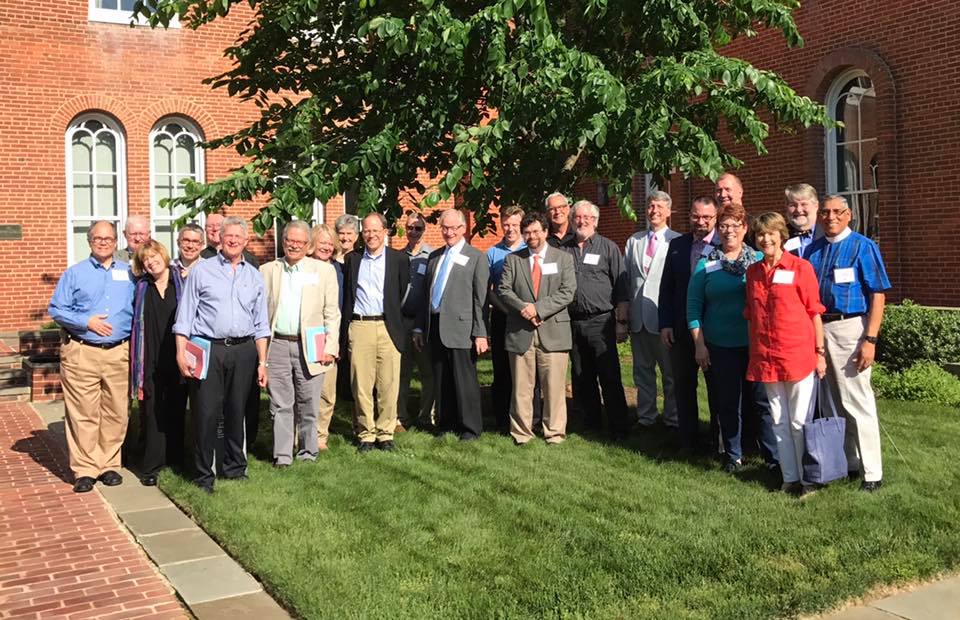David Calvert is the Creative Arts Director for Grace Community Church in rural North Carolina and a PhD graduate in Theology and Worship from Southeastern Baptist Theological Seminary. He writes the album reviews for The Center for Congregational Song.
Authentic Community
One of the deep longings of the human heart is for authentic community. This longing stands in stark contrast to one of the hallmark features of our current culture: convenience. In the world of music (even congregational song), we are caught in the tension. Following an artist on Twitter or Instagram and watching their instantly-accessible videos on YouTube is not necessarily the way to build community with that artist. It is frustratingly tempting, however, to simply pull up an artist’s albums on Spotify and stream them in whatever location we desire, immediately at whatever time we want. By interacting with them in a digital space at our convenience, we perpetuate the illusion of community.
Vinyl
The resurgence of the vinyl format for albums is one way that artists, and music lovers, are fighting through this tension. Listening to an album on vinyl is a deliberate exercise, requiring the focused attention of the listener and the space that sustains a turntable and speakers. In many cases, putting on a record causes the listener to slow down. Listeners may even choose to listen to these records in community, with other like-minded aficionados who are willing to put down their smartphones in order to enjoy the sounds carved into the vinyl.
I recently encountered another way that an artist, or group of artists in this case, is using technology to be counter-cultural. What if an album of songs was released one-at-a-time, over the course of months, instead of immediately uploaded in its entirety to all streaming outlets? Most artists tend to favor the plan that leads to most exposure, with simultaneous uploading to every streaming platform and digital downloads available in multiple online spaces. The collective Common Hymnal has intentionally chosen a different path.
Album
In March, Common Hymnal announced an album on YouTube. In late April, they announced it on Facebook with a little more detail. Rather than marketing a targeted release date and hitting the viewer with slick branding and crafted teasers, the various artists used selfie-videos to share their obvious joy for the task of writing songs for the Church to sing. Common Hymnal is an ethnically diverse group of songwriters and worship leaders. In the prevailing polarization and politicization of the Church, the members of Common Hymnal found themselves in an emerging “spiritual underground” seeking to worship “with a social conscience.” The forthcoming album, being birthed from a recent gathering, reflects the raw, genuine, joyful, communal energy of Common Hymnal.
As an eager listener, who loves the ability to access innumerable artists with just a few taps on my phone, I have been caught off guard by the tactics employed by Common Hymnal. My initial, culturally-informed reaction was, “Wait, when can I get the whole album?” The answer to this particular question is “over the next several months.” In the month since the announcement of the album, 3 songs have been released on YouTube with over a week between them. This method invites the listener/viewer to rest in each individual song and the accompanying visual context and to sit with Common Hymnal and let the song(s) breathe. The simple videography helps the viewer feel like they’re in the room, not as a fly on the wall but as a fellow participant at the table.
Table of the Lord
The table of the Lord is the focus of the songs released thus far, with contributing songwriters such as Leslie Jordan (of All Sons & Daughters), David Brymer, Mark Alan Schoolmeesters, and Jenny Wahlström. With Lent and Holy Week freshly behind us, it has been especially meaningful to listen to these songs during this season. The implications of the Lord’s Supper extend beyond mere symbolic remembrance, and although I don’t intend to drift into academic/theological ideas, it is notable that the songs from Common Hymnal are a much-needed anchor in the embodied experience of coming to and partaking at the Lord’s Table.
I invite you to consider “Subscribing” to the Common Hymnal YouTube channel so that you too can anticipate with me the development of this new album. Make note to check your favorite streaming or purchasing outlet over the next several months. Feel with me the tension of waiting for the songs to be released and feel with me the peace of seeing/hearing these worshipers with diverse backgrounds gathering in safe yet vulnerable spaces to sing to God and to each other. My typical gig here at The Center for Congregational Song is as writer for the Album Reviews, and I will certainly be posting a review of this album whenever it finishes in November. Already, the 4 songs released on YouTube have memorable melodies and rich, biblical lyrics; and they are pitched well for folks to sing along. I may be showing my hand a little early, but I’m very excited about this album and the larger potential for Common Hymnal.
Listen with Intention
In the meantime, even if you aren’t prone to put a vinyl on the turntable, consider finding a small way to listen to music in a counter-cultural way. Choose to listen with intention. Slow down and breathe in and out as you let your body become a resonant chamber for the sound. If you’re in a congregational space, notice how the voices around you merge together. Celebrate the ways that our common humanity leads us to bear witness in song to the work of God in us and in the world.
Common Hymnal Facebook announcement
Common Hymnal YouTube channel



